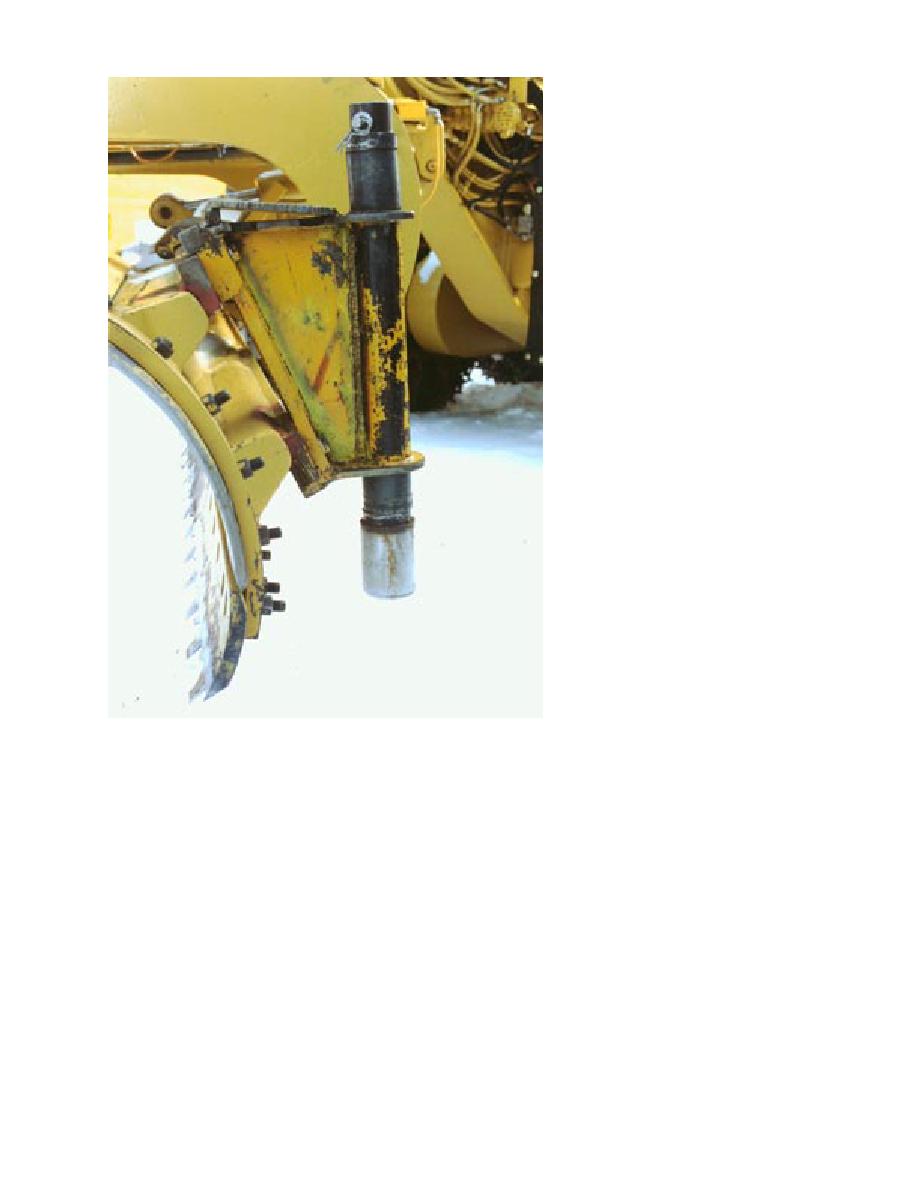
from the immediate flanks of the
airstrip and thus had a high con-
centration of ice chunks that had
been removed from the runway
during construction.) We used the
heavy pneumatic-tire roller to com-
pact this snow in 10- to 15-cm lifts;
this also acted to mix well the ice
and snow so that the ice chunks
were more uniformly distributed
throughout the cover. The surface
was planed and dragged to leave a
smooth and porous surface.
The 199394 season at Pegasus
was more typical of what we ex-
pect would be a normal operational
year. Because the annual sea ice
runway at McMurdo provides eco-
nomical access for wheeled aircraft
at the beginning of the season, the
Pegasus runway is not required
until after about 15 December.
Thus, the snow that covers the run-
way throughout the winter, and
any extra snow that is encourage
to collect between early September
and late November (if it is needed)
remains on the runway until it is
safe to remove based on the guide-
lines established for prevention of
melt. By using natural means of
snow collection, much less effort is
required, but attention must be
paid for a longer period of time.
A survey of the runway snow
cover in late August 1993 indicated
that the winter had provided an
Figure 80. Adjustable skids used to assist in "floating" grader blade.
average of about 30 cm (12 in.) of
snow. However, this snow was in
ice on or about the beginning of January. During
no way uniformly distributed. The centerline was
our first operational season (199293), construc-
exposed along nearly the entire length of the run-
tion was not completed until the end of October.
way. Along the edges, the runway had tapered
We used the snowblower, operating along the
drifts that diminished in height as they extended
flanks of the runway, to move a snow/ice mix-
toward the centerline. Many small drift pods (<10
m2) were randomly scattered across the remain-
ture back onto the runway for protection. The
der of the surface. In addition, the south half of
bulldozers and grader with skids (feet) (Fig. 29
the runway had notably more snow accumula-
and 80) were used to spread the snow uniformly
tion than the northern portion. We used the rip-
over the ice surface. This operation required about
per with skids (Fig. 30) to loosen the drift snow.
three weeks to complete. Thus, based on our
This was followed by the grader and bulldozers
guidelines, we were about 10 days late in getting
the snow cover in place. This created consider-
with skids, and then the snow plane and drags, to
able concern which was compounded by the high
redistributed the snow and smooth the surface.
ice-chunk content in the protective snow cover.
This process took about two weeks to accomplish
(The snow blown back onto the runway came
using a crew of four persons.
76



 Previous Page
Previous Page
